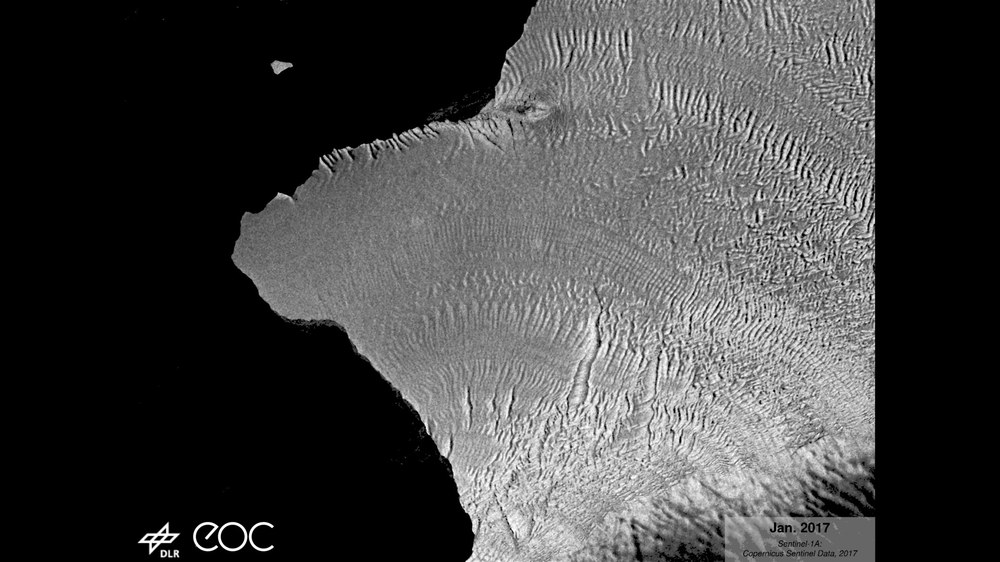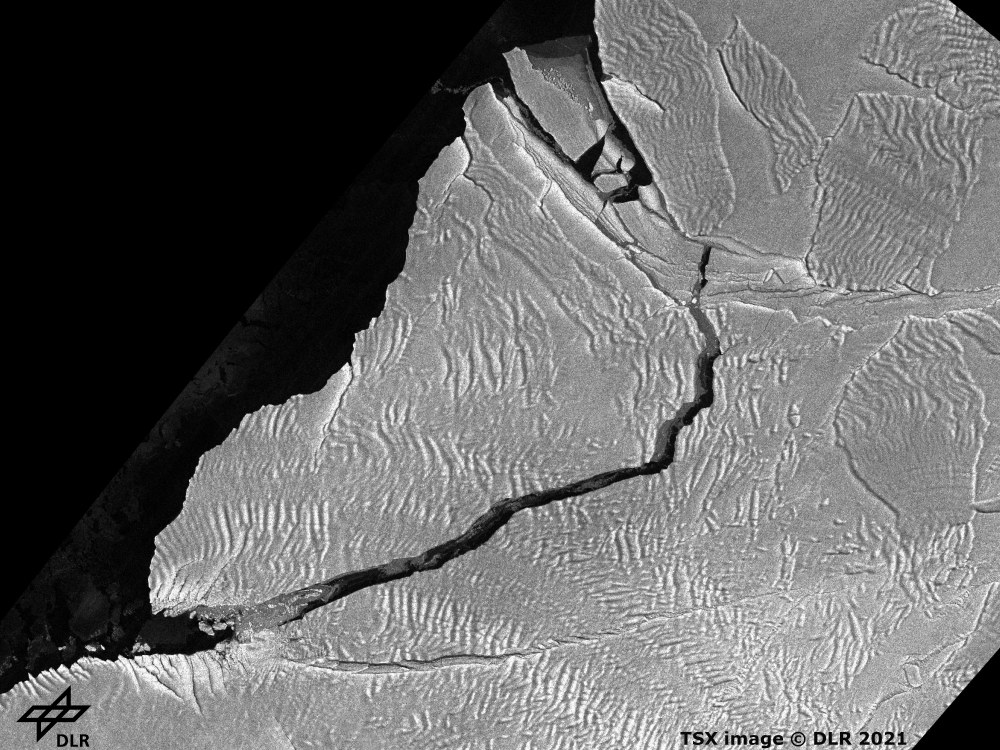Iceberg A74 on the Brunt Ice Shelf
The breaking off of large icebergs is a recurring spectacle in the Antarctic and is initially part of normal ice dynamics. These events can be especially well monitored with the help of radar satellites because they can keep an eye on the ice surface independently of weather and illumination conditions as well as precisely record spatial dimensions. The most recent calving of Brunt Ice Shelf in the Weddell See was recorded on 27 February 2021 and shows one of the few – and perhaps first-known – major ice breakups on the Brunt Ice Shelf in recent decades.
The image shown above was recorded by the German radar satellite TerraSAR-X and is one of a series of images assembled for RV Polarstern. This research icebreaker of the Alfred Wegener Institute is currently on an expedition in the Weddell Sea. What is special about these radar images is their availability. The data are provided to the scientists and crew onboard the ship right after they are acquired and processed. Among other uses, with the help of the TerraSAR-X data they can plan their short- and mid-term expedition itinerary, adapting it to prevailing ice conditions. Near-real-time available is made possible by DLR’s “GARS O’Higgins” (German Antarctic Receiving Station) acquisition station on the tip of the Antarctic Peninsula. From there, either directly after recording or during the following orbit, the data can be promptly acquired, processed and sent to the research ship in the form of a data product customized for the users.
Brunt Ice Shelf has been under observation for some time. Huge, kilometre-long cracks have been forming over the course of several years in the southern part of the shelf. During the southern hemisphere summer of 2016/2017 the British research station Halley VI even had to be moved to a part of the ice shelf that was further inland. The crevasse known as the ‘Halloween crack’ ominously widened in 2016, making the station’s relocation unavoidable. For safety reasons the station is accordingly occupied only in the Antarctic summer months. The British station’s location on Brunt Ice Shelf has a long tradition; research stations have operated there since 1956. In 1985 the Antarctic ozone hole was confirmed there metrologically for the first time.
As can be seen from the current Sentinel-1A recording, a ca. 1500 km² large part of Brunt Ice Shelf is only connected to the rest of the ice shelf by a bridge that is merely a few kilometres wide. It is difficult to predict just when the next major breakoff will occur, but radar satellites will show it to us within a very short time!

Brunt_Eisschelf-2017-2021
Your consent to the storage of data ('cookies') is required for the playback of this video on Quickchannel.com. You can view and change your current data storage settings at any time under privacy.
Links
- German Antarctic Receiving Station GARS O’HigginsWochenberichte Polarstern - AWI
- GEO: NATURPHÄNOMEN - Gigantischer Eisberg in der Antarktis abgebrochen
- DER SPIEGEL: Antarktis: Deutscher Radarsatellit fotografiert neuen Rieseneisberg
- DER Tagesspiegel: Spektakuläres Ereignis - Gigantischer Eisberg in der Antarktis abgebrochen


